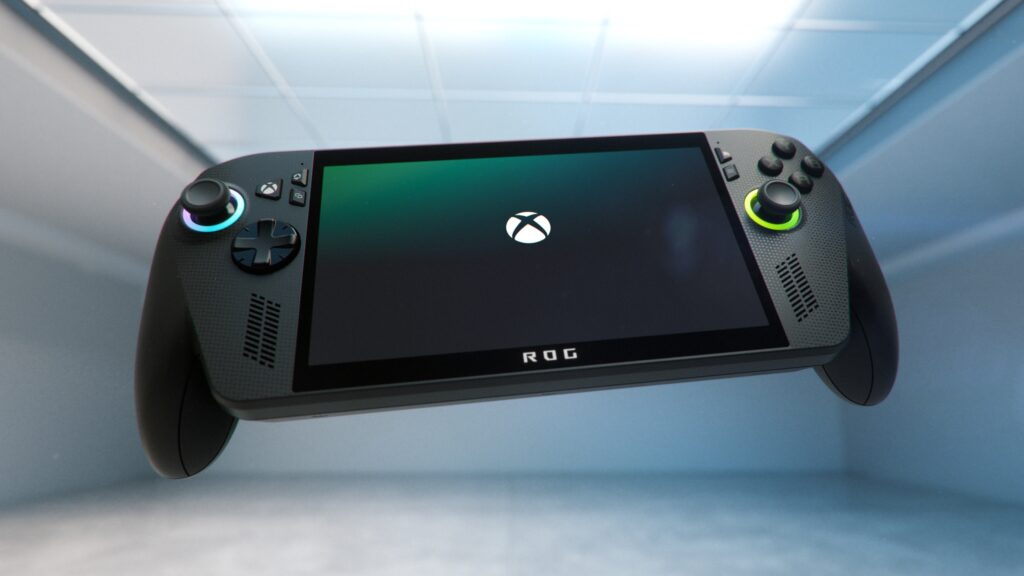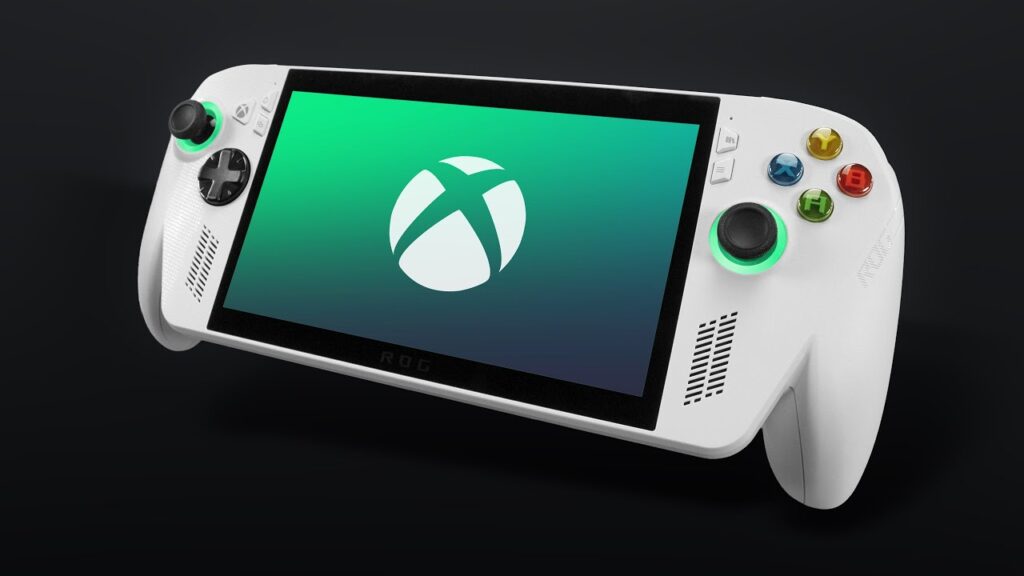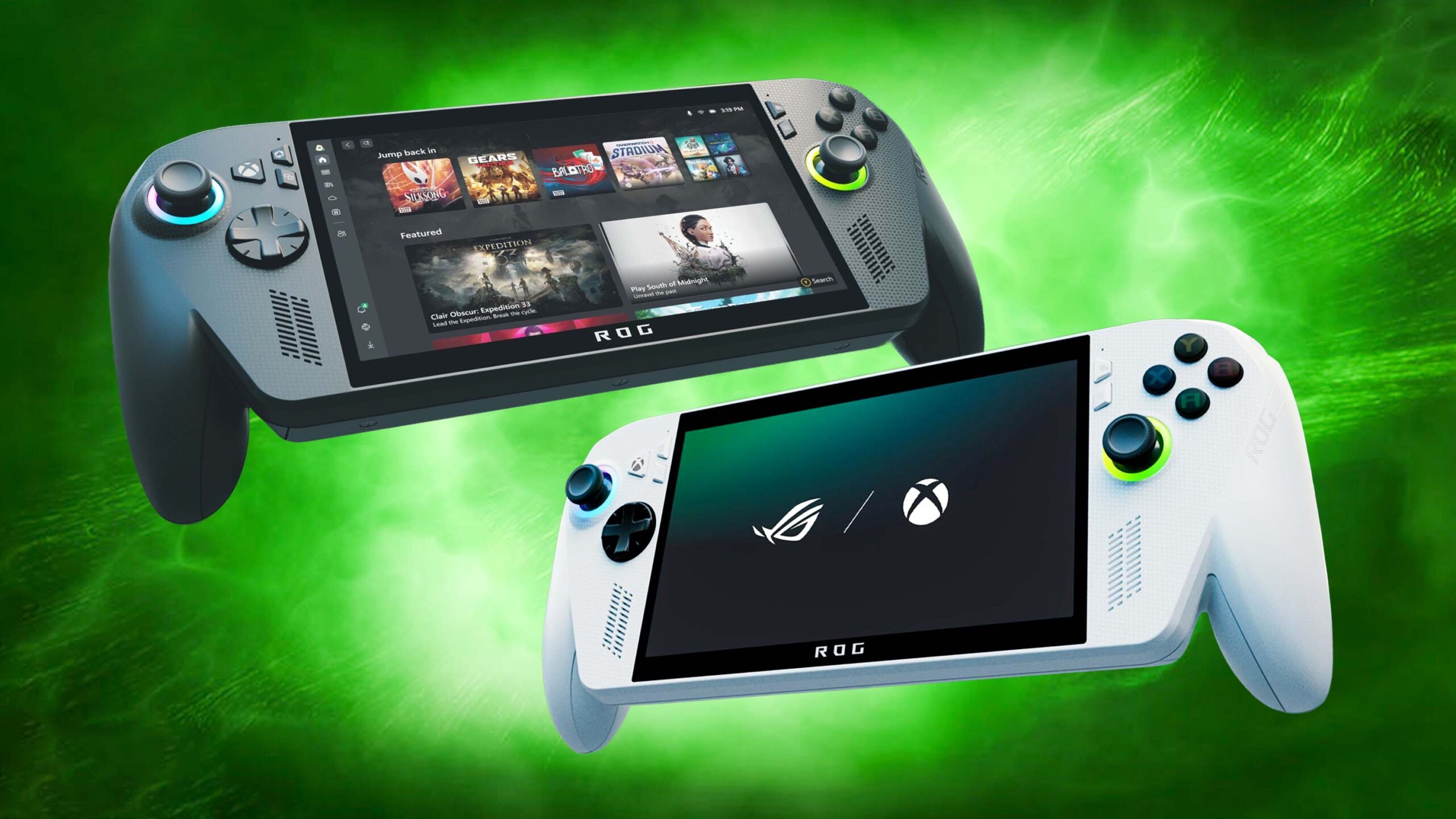Microsoft and ASUS have introduced two new handheld gaming devices: the Xbox Ally and the Xbox Ally X. Both are part of “Project Kennan” and aim to bring Xbox gaming into a more portable, flexible form. They run Windows, but the focus is Xbox. Think of them as gaming laptops shrunken down to console-sized handhelds.
Let’s break down what they are, what’s different between them, and what matters most if you’re considering one.

What Are the Xbox Ally and Ally X?
The Xbox Ally is the base model. It runs on the AMD Ryzen Z2 A chip with 16 GB of RAM and a 512 GB SSD. The display is a 7-inch 1080p screen with a 120Hz refresh rate and variable refresh rate support.
The Ally X is the upgraded model. It uses a Ryzen Z2 Extreme chip with 24 GB of RAM and a 1 TB SSD. It includes a larger battery, improved triggers, and a Thunderbolt-capable USB-C port.
Both devices run full Windows 11 but boot directly into a full-screen Xbox interface. That interface matters more than you’d think.
What Makes the Xbox Layer Different?
Booting into an Xbox-first dashboard gives these devices a console-like feel. You get:
- Fast access to Xbox titles and features
- The ability to use Steam, Epic, Battle.net, and other PC launchers
- A dedicated Xbox button that opens the guide and manages settings
That Xbox button is a big deal. It puts core features front and center and avoids the clutter of jumping between apps and system menus.
The UI replaces the ASUS Armoury Crate with something more focused and more useful. If you’ve ever used a Steam Deck, this feels more natural for Xbox fans.
Side-by-Side: Ally vs Ally X
Here’s how the specs compare:
| Feature | Xbox Ally | Xbox Ally X |
|---|---|---|
| CPU | AMD Ryzen Z2 A | AMD Ryzen Z2 Extreme |
| RAM | 16 GB LPDDR5X | 24 GB LPDDR5X |
| Storage | 512 GB SSD (M.2 2280) | 1 TB SSD (M.2 2280) |
| Display | 7″ 1080p 120Hz w/ VRR | 7″ 1080p 120Hz w/ VRR |
| Battery | 60 Wh | 80 Wh |
| Triggers | Standard analog | Xbox impulse triggers |
| USB-C Ports | USB-C 3.2 | USB-C 4.0 + USB-C 3.2 |
The Ally handles most current games at modest settings. The Ally X is for players who want to run newer titles with more headroom and longer sessions.

Design and Controls
Both models stick to the Xbox layout. You get offset analog sticks, proper bumpers and triggers, and a familiar button setup. Each one includes rear paddle buttons as well.
The Ally X has thicker grips and impulse triggers. This adds comfort and better feedback, especially during racing or shooter games.
Weight and balance feel solid. These are heavier than a Nintendo Switch, but the size is compact enough for travel.
Display and Graphics
Both handhelds share the same display. A 7-inch IPS panel at 1080p with 120Hz refresh rate.
The picture is sharp. Motion is smooth. Colors are strong for an IPS panel. VRR helps eliminate screen tearing when framerates dip.
It isn’t OLED, but for what it is, it gets the job done without pulling too much battery.
Performance and Battery Life
Performance is where things separate.
The base Ally handles indie games, emulators, and some AAA titles at 720p or 900p with reduced settings. It’s close to the Steam Deck in real-world performance.
The Ally X takes it further. The Ryzen Z2 Extreme chip and extra RAM let it push modern games at higher settings, often hitting 1080p more consistently.
Battery life improves on the X too. The standard Ally runs on a 60Wh battery, giving around 1.5 to 2.5 hours of gameplay.
The Ally X jumps to 80Wh. You might get 3 to 4 hours depending on game type and performance mode. That boost helps if you’re traveling or playing something demanding.
Software and Compatibility
Both devices run Windows 11, but thanks to the new Xbox interface, you rarely deal with the Windows desktop unless you want to.
You can:
- Access the full Xbox experience from startup
- Use Steam, Epic Games Store, GOG, or Battle.net
- Run other apps like Discord or browser-based services
- Manage performance settings and quick actions using the Xbox overlay
It’s all built to support console-style navigation while keeping PC flexibility.
Game Library Access
Each model supports the full Xbox ecosystem. If you already have a digital library on Xbox, you’ll be able to play most of it through Remote Play or Play Anywhere titles.
These are full PCs though. You’re not limited to Xbox titles. You can install PC versions of games through third-party launchers or run emulators for older consoles.
That gives you more options than something like a Switch or even the Steam Deck, depending on how you play.
What the Community Thinks
Initial reactions are mostly positive. On Reddit, users are excited about the Ally X’s hardware jump. The 24 GB of RAM and 1 TB SSD drew the most attention.
Gamers on YouTube are calling it one of the most promising handhelds yet for Xbox fans.
“Finally, a handheld that boots straight into Xbox, not a hacked-together launcher.”
“The impulse triggers alone made it feel like a real Xbox console in your hands.”
IGN’s preview at Summer Game Fest praised the comfort of the Ally X and how the interface feels built for gaming instead of general Windows use.
There’s still healthy skepticism about price and real-world thermal performance, but interest is high.
How Different Are They, Really?
In design, layout, and interface, the Ally and Ally X are almost the same.
What makes them different:
- Ally X runs games better under pressure
- Ally X has more RAM and storage
- Ally X runs longer on a charge
- Ally X uses upgraded triggers and a better grip design
If you’re trying to save money, the base Ally will be enough for most games and use cases. If you want something closer to a console replacement or portable gaming laptop, the X makes more sense.
What’s Still Missing?
Some questions remain:
- How will pricing compare to Steam Deck and Legion Go?
- Will ASUS release OLED versions down the line?
- Can Microsoft push more support behind the Xbox interface across more handheld PCs?
- Will Xbox prioritize optimizing Windows for portable use?
If the Xbox interface becomes more widely available, more devices could run it. That might change the whole category.
Final Thoughts
The Xbox Ally and Ally X are Microsoft’s best shot so far at real portable Xbox gaming.
The Ally is a good fit for casual players, travel, and lighter gaming. The Ally X pushes performance and comfort further, making it better for longer sessions and demanding titles.
Both devices offer more flexibility than a console and more focus than a regular Windows PC. You don’t have to choose between ecosystems. You can play what you already own and carry it with you.
If the price is right, either one could end up being a real competitor in the handheld space. Not just for Xbox fans, but for anyone looking for a powerful, portable gaming device.




